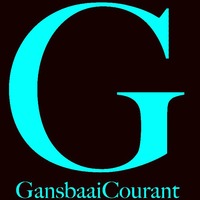Skelm teer sy pad terug selle toe
‘n Ou skelm het Maandag spreekwoordelik in die leeu se bek ingestap toe hy ‘n...
SANSA’s robust endeavours to strengthen the country’s role in multinational space science research, this time specifically in upper-atmosphere studies, come to fruition with the unveiling of the Optical Space Research (OSR) Laboratory at the South African Astronomical Observatory (SAAO) in Sutherland on 6 April this year.
“Research of the Earth’s atmosphere and ionosphere is crucial for understanding our near-Earth space and the interconnected processes that govern our natural environment and impact the technology we rely on daily. We will use the OSR initially to study atmospheric gravity waves to gain greater insight into the dynamics of the Earth's middle atmosphere,” says Prof Kosch, Chief Scientist at SANSA's Hermanus facility in the Western Cape. "Such knowledge is important because the middle atmosphere couples space weather from above with terrestrial weather below”.
This state-of-the-art facility will be used solely for research and to host space monitoring projects with national and international partners.
“Space science research is complex and requires significant multinational collaboration. The unique capabilities of this facility will provide crucial space science data to meet national and international obligations, as well as raise the standard of South African research and supply information about unanswered scientific questions to enhance scientific development,” says SANSA CEO, Dr Val Munsami. Aligned with SANSA’s human capacity development imperative, the OSR Laboratory will also be used by space science students nationally and internationally for research projects.
Unique location in SA
SANSA’s hosting agreement with the SAAO facilitated the construction of the OSR Laboratory in 2016. The unique location of the observatory in Sutherland, which enables optical and radio research of the atmosphere, is radio quiet and offers the optically dark, clear seeing conditions that makes it an ideal location for the laboratory.
SANSA has a partnership agreement with the German Aerospace Centre (DLR), to host a space debris tracking station within the OSR Laboratory. The facility will include a space debris tracking telescope as part of SMARTnet™ (Small Aperture Robotic Telescope Network), a dedicated sensory network based on telescope systems. “Satellite safety and reliability depend on identifying threats, such as collisions, and using countermeasures to deal with hazardous situations,” says Dr Hauke Fiedler, Team Leader of Space Situational Awareness at DLR.
The space debris tracking telescope will be operated remotely by the DLR German Space Ope-ration Centre together with the Astronomical Institute of the University of Bern, according to a SMARTnet™ observation plan, to identify non-star objects that could pose a collision hazard. “This will enable the research team to activate collision avoidance measures to ensure the safe operation of satellites,” says Dr Fiedler. The collaboration will also provide a knowledge exchange partnership that will initiate space debris tracking know-how in South Africa.
SANSA will also use the laboratory to record a phenomenon called “sprites”, following its recording of the first images of sprites over Africa from Sutherland on 11 January 2016.
Triggered by large cloud-to-ground lightning strikes during major thunderstorms, sprites are optical gas discharges from the top of convective thunderstorm clouds that appear as brief flashes of very bright light, lasting between 1-10 milliseconds, at an altitude of 50-100 km.
Given the millions of lightning strikes that occur annually, the rarity of the reported sightings is surprising.
"Our observations of sprites pave the way for more comprehensive observations at multiple wavelengths to improve our understanding of how sprites are triggered and their effects on the upper atmosphere," says Prof Kosch, Chief Scientist at SANSA's Hermanus facility in the Western Cape.
The camera in the OSR Laboratory can detect sprites as far away as Bloemfontein, Lesotho and Port Elizabeth, covering a large section of the summer lightning activity area. It can also detect sprites over the ocean near Port Elizabeth and East London, where South Africa has the relatively rare feature of lightning over the ocean. This will enable the SANSA scientists to determine whether sprites also occur over the ocean.
Space management
The laboratory houses specia-lised research equipment, including an airglow imager to observe atmospheric gravity waves in the mesosphere through a variety of wavelengths; night-vision video cameras to observe sprites in white-light and multiple wavelengths; an ELF (extremely low frequency) receiver to observe lightning and sprites in the ELF spectrum; a mesospheric temperature mapper to estimate mesospheric temperature and a SBAS (satellite-based augmentation system) receiver for aircraft navigation.
“There is no doubt that this facility will add significantly to our knowledge about the Earth’s upper-atmosphere and further enable SANSA to leverage the benefits of space science and technology for socio-economic development, environmental conservation and space asset management in service of humanity,” says SANSA MD, Dr Lee-Anne McKinnell.
Excellence award
Dr John Bosco Habarulema, a space science researcher at the South African National Space Agency (SANSA) in Hermanus, received an award for Research Excellence from the American Geophysical Union (AGU) in 2016. Dr Habarulema was one of two winners of the presti-gious 2016 Africa Award for Research Excellence in Space Science.
Gansbaai Courant provides the Gansbaai community with the latest in news and interesting stories about and around the area.
View ProfileXplorio is your local connection allowing you to find anything and everything about a town.
Read More‘n Ou skelm het Maandag spreekwoordelik in die leeu se bek ingestap toe hy ‘n...
Annually, the world unites in a coastal clean-up initiative.
‘n Glimlaggende Carli Swart (7) het Dinsdag, 19 September 2017...
Luisterryke koorsang en lofprysing het die NGK se kerkgebou Sondag...
39 rommelrowers het Saterdag deel uitgemaak van Internasionale Kus Opruimdag.
Die Suid-Afrikaanse Astronomiese Observatorium (SAAO) in Kaapstad bied reeds die afgelope paar jaar...
